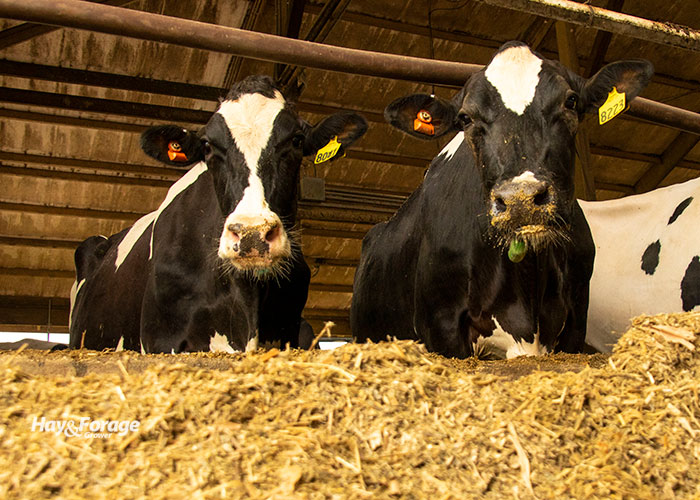
Through the years, we’ve made great strides in evaluating forage quality. With each passing new discovery and resulting new forage metric, we think we’ve got it figured out. Often, we don’t.
In a recent issue of the Miner Institute’s Farm Report, Rick Grant reported on a study from the U.S. Dairy Forage Research Center (DFRC) that examined the importance of compounds called hydroxycinnamic acids.
“These acids serve a critical role in determining rumen neutral detergent fiber degradability,” writes the dairy nutritionist and president of the Miner Agricultural Research Institute. “Lignin is crosslinked with cell wall carbohydrates through hydroxycinnamic acids such as ferulate, and this crosslinking is thought to be a primary factor limiting fiber degradation in the rumen. Another important hydroxycinnamic acid, p-coumaric acid, also may reduce rumen fiber digestibility,” he adds.
How this relationship impacts fiber digestibility makes a lot of practical sense. More linkages are going to hinder rumen bacteria from accessing and digesting cell wall carbohydrates.
In the DFRC study, researchers sought to determine if cow response was more associated with lignin content or crosslinking as measured by hydroxycinnamic acid concentration.
The study used tall fescue and timothy harvested at either an early or late maturity stage of the second cutting. The forage was harvested and stored as baleage.
Harvesting at the later date boosted neutral detergent fiber (NDF) and lignin concentration for the timothy but not the tall fescue. At both harvest dates, timothy had more lignin and NDF than tall fescue.
Although the tall fescue had a lower NDF percentage, the concentration of esterified ferulic acid and p-coumaric acid was greater for the tall fescue than the timothy. This was true for both harvest dates.
“The timothy silage-based diets supported more energy-corrected milk yield, even though the NDF and forage-NDF content in the timothy and tall fescue diets were similar,” Grant notes. “Surprisingly, the timothy silage also contained more lignin than the tall fescue. This tells us that the simple fiber, lignin, and nutrient composition of the diet (or forage) does not explain the differences in performance due to type of grass.”
It appears that the linkage compounds were more important than lignin concentration since the hydroxycinnamic acid content was greater for tall fescue than timothy. With more crosslinking of cell wall carbohydrates to lignin in the tall fescue, a slower rate of fiber digestion occurred and there was less energy available to the cow.
“This research confirms that lignin crosslinking (as measured by hydroxycinnamic acid content) is the primary factor that limits NDF degradability and energy availability for the milk production,” Grant asserts. “This research provides strong evidence that, in fact, the content of hydroxycinnamic acids, notably ferulic acid, is the primary factor that determines milk production response to grass forages such as timothy and tall fescue.”
Of course, the importance of these chemical linkages likely goes far beyond just milk production. They will also impact fiber digestibility, energy availability, and resulting weight gains in beef cattle where often a much higher percentage of the diet is comprised of forages.
“We need to move beyond simply measuring lignin,” Grant concisely concludes.

